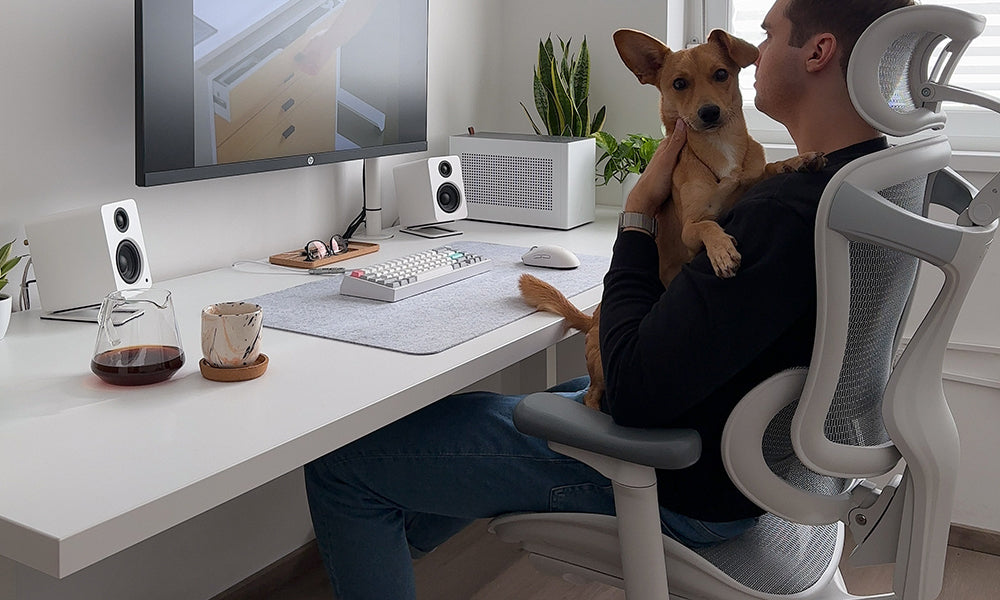Investing in an ergonomic chair can have a significant impact on your health, comfort, and productivity, particularly if you spend long hours sitting at a desk. However, the process of selecting the right ergonomic chair is often more complicated than people anticipate. The market is flooded with options, and making the wrong choice can result in discomfort, pain, and wasted money. To help you avoid these pitfalls, here are five common mistakes people make when buying ergonomic chairs and how to avoid them.
Prioritizing Aesthetics Over Functionality
One of the most common mistakes when purchasing an ergonomic chairs is placing too much emphasis on how the chair looks rather than how it functions. While a sleek and modern design might enhance the appearance of your workspace, it doesn't necessarily guarantee comfort or support. Ergonomic chairs are designed with the purpose of supporting the body during long periods of sitting, and their functionality should always take precedence over aesthetics.
When shopping for an ergonomic chair, focus on key features like lumbar support, adjustable seat height, and armrests, rather than just color schemes or materials. A chair may look appealing, but if it doesn’t provide proper back support or has limited adjustability, it could lead to discomfort or even long-term back issues. Look for chairs that strike a balance between style and functionality, such as the Sihoo Doro C300, which combines a modern design with essential ergonomic features like dynamic lumbar support.
Ignoring Adjustability Options
A key characteristic of a quality ergonomic chair is its adjustability. Everyone’s body is different, so a chair that works well for one person may not work for another. Failing to choose a chair with adjustable features is a common mistake that can result in discomfort and a lack of proper support.
At a minimum, the chair should offer adjustable seat height, armrests, and lumbar support to cater to your body’s unique needs. Ideally, you should also look for chairs with seat depth adjustment and recline options. For example, the Sihoo Doro S300 comes equipped with customizable dual dynamic lumbar support and an anti-gravity mechanism for full-body support. These features ensure that users can personalize the chair to their specific body type and sitting posture.
Not Testing the Chair Before Purchase
In today’s world of online shopping, it’s easy to get caught up in reading reviews and looking at photos without ever physically testing the product. This is a common mistake that can lead to buyer’s remorse, especially when it comes to ergonomic chairs. No matter how many positive reviews a chair has, there’s no substitute for sitting in it yourself and assessing its comfort and functionality.
If possible, visit a store and try out several chairs to see how they feel. Pay attention to how well the chair supports your lower back, the firmness of the seat cushion, and whether the armrests can be positioned comfortably. If you’re ordering online, make sure the seller offers a return policy that allows you to test the chair at home and send it back if it doesn’t meet your needs.
Overlooking the Importance of Lumbar Support
Lumbar support is a critical feature in ergonomic chairs, yet many people either overlook it or underestimate its importance. Proper lumbar support ensures that the natural curve of your lower back is maintained, reducing the risk of developing back pain over time. Chairs without adequate lumbar support can cause your lower back to slump, leading to poor posture and potential long-term health issues.
When choosing an ergonomic chair, make sure it includes adjustable lumbar support that can be positioned to fit your spine's curvature. The Sihoo Doro C300 Pro, for example, offers dynamic lumbar support that adapts to your movements, ensuring that your back remains properly supported throughout the day.
Choosing the Wrong Seat Material
Seat material plays a crucial role in both the comfort and durability of an ergonomic chair. However, many people focus too much on appearance and neglect the practical implications of their choice of material. While leather chairs may look luxurious, they can become uncomfortable if they don’t offer proper breathability, especially in warmer climates. On the other hand, chairs with mesh fabric are breathable and flexible, which helps to prevent discomfort caused by heat buildup during long sitting sessions.
Consider how much time you’ll be spending in the chair and in what kind of environment. For all-day use in a climate-controlled office, breathable mesh chairs like the Sihoo Doro S100 are often a better choice than heavier materials like leather. Mesh chairs also tend to conform to your body shape more effectively, providing consistent support throughout the day.
Conclusion: Make an Informed Decision
Buying an ergonomic office chairs can be a game-changer for your comfort, productivity, and overall health. However, it’s essential to avoid these common mistakes: prioritizing looks over functionality, neglecting adjustability options, skipping the testing phase, underestimating the importance of lumbar support, and choosing the wrong seat material.
By focusing on the right ergonomic features—adjustability, lumbar support, and the right materials—you’ll be able to find a chair that supports your body effectively. Models like the Sihoo Doro Series, with their array of adjustable features and user-centered designs, make it easier to strike a balance between comfort, aesthetics, and durability. Investing in the right chair today will save you from discomfort and long-term health issues tomorrow.



